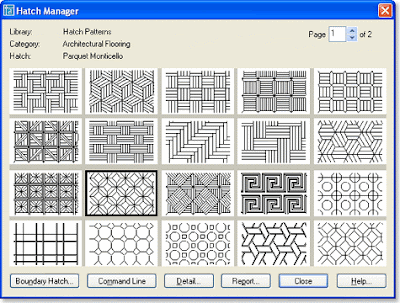Sombreados Para Autocad 2009
понедельник 19 ноября admin 7
A customer asked us how to load custom hatch patterns into AutoCAD as they see that you can download free ones from the internet. The first step to download these new hatch pattern files. The new patterns are actually text based files with a file extension of.pat. A couple of site where you can download hatch pattern are:. There are many other site on the internet and you will find them by simple doing a google search. Here is the link of the search I did. For this blog I went to the Dotsoft website and downloaded the Spanish Roof tile pattern.
Free download zte unlocker. It should be written somewhere on the body. If the process above isn't working for you then it might because that your PC or modem is connected to the internet. • • • • • • Not Working? On the off-chance that DC Unlocker still isn't detecting your modem, Simply Click on the Magnifying Glass to Detect your modem. In that case, you will have to disconnect it, Exit/Close the DC-Unlocker Software and re-Open it.
Aug 07, 2009 Hola a todos: Tengo un problema con AutoCAD 2010: al ejecutar el comando hatch cuando uso la opcion de seleccionar el punto interior no se marca punteado como en AutoCAD 2009 y anteriores para saber en que area es donde se va a crear el contorno donde se va a aplicar el hatch. Sombreados (Hatchs) para AutoCAD - (Descarga.
I downloaded the Spanish Tile Roofing pattern file onto the Desktop. The filename is called “spantile.pat”. What you now have to do is to copy the pattern file into a path where AutoCAD looks for files to use, in this case the general AutoCAD “Support” file path.
Browse to the location where you saved the pattern file, right click on the file, cut the file and past it into the following locations for the different Window operating systems: Windows Vista, 7, 8, 8.1 and 10. C: Users AppData Roaming Autodesk AutoCAD 20xx Rxx.x enu Support Windows XP: C: Documents and Settings Application Data Autodesk AutoCAD 20xx Rxx.x enu Support Note: For AutoCAD 2009 and earlier, the default hatch pattern location is: C: Program Files Autodesk AutoCAD 20xx Support Now start AutoCAD, zoom to an area you want to hatch and then click to hatch tool. 
Click the expand button on the bottom right of the pattern panel to see more hatch patterns and scroll down. Search for and select the new hatch pattern you have downloaded, in this case called SPANTILE. Go through the process of creating your hatch but select an internal area.
Note that I also changed the scale to 100 before I clicked the internal area. Note that this is only one way of adding hatch patterns to your AutoCAD installation. There are other ways to add Hatch patterns to your installation as well.
If you need to insert a hatch in an area that isn’t completely “closed” this may be your new favorite friend. Instead of temporarily making a line to close off the area and then inserting the hatch and then going back to erase the temporary line (which you may forget about) you can change this setting.
By default, this setting is set to zero which means that a hatch area has to be completely closed. You can set this to a value up to 5,000. There are a number of ways to change this setting. AutoCAD Classic: via the Hatch Dialog Box: If you have a newer version of AutoCAD that uses the RIBBON, you can get to the old Hatch Dialog box by clicking on the diagonal arrow on the “Options” panel (as seen below) To expand the Hatch Dialog box, Click the Arrow that points to the right (as seen above).
Now you can see the Gap tolerance are and make any changes in this area (as seen below) From the Ribbon: Expand the Options panel on the Hatch Ribbon and change the Gap Tolerance setting (as seen below) From the command line (as seen below) • HPGAPTOL • Change the value As you can see above, there is a gap of 0.7 units. I changed the setting to “ignore” gaps that equal 0.7 or less when I hatch an area. Search for: • Recent Posts • • • • • • Follow Blog via Email Enter your email address to follow this blog and receive notifications of new posts by email.
Join 974 other followers Sign me up! • Archives • • • • • • • • • • • • • • • • • • • • • • • • • • • • • • • • • • • • • • • • • • • • • • • • • • • • • • • • • • • • • • • • • • • • Top Posts • • • • • • • • • • • Categories • • • • • • • • • • • • • • • • • • • • • • • • • • • • • • • • • • • • • • • • • • • • • • • • • • • • • • • • • • • • • • • • • • Meta • • • • • • • Super excited that my new nerd books have arrived from @. I am hoping that these books will help get m • @ @ Thanks Lynn. I hope that you're doing great! • @ @ How about AlarmCAD for AutoCAD • Tip: Override XREF Layers to Single Color • @ Way to go Christy! I hope that you are doing well. You obviously rock!

As I knew you always would • @ Is your website down? • @ @ @ Yes!!!!!
